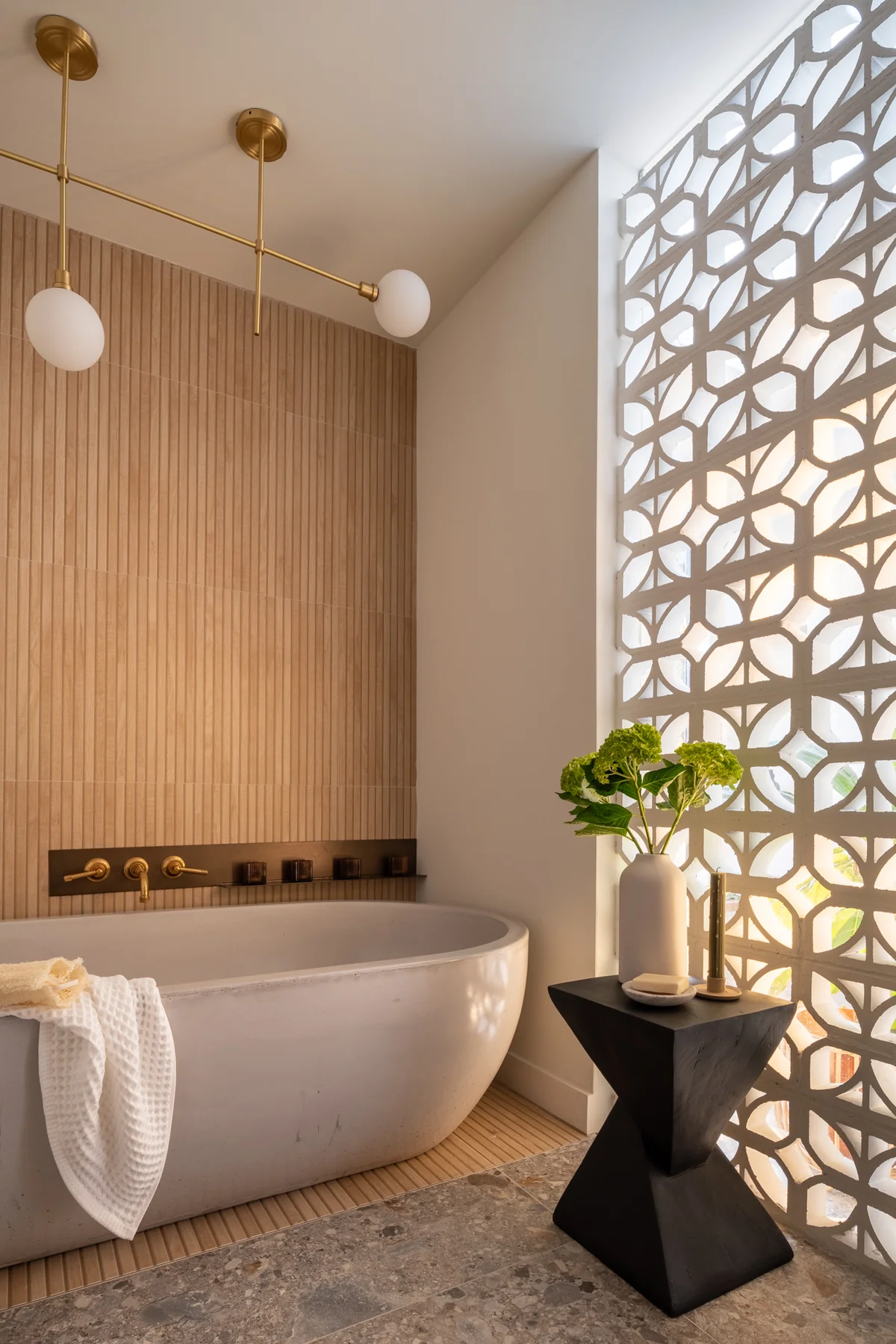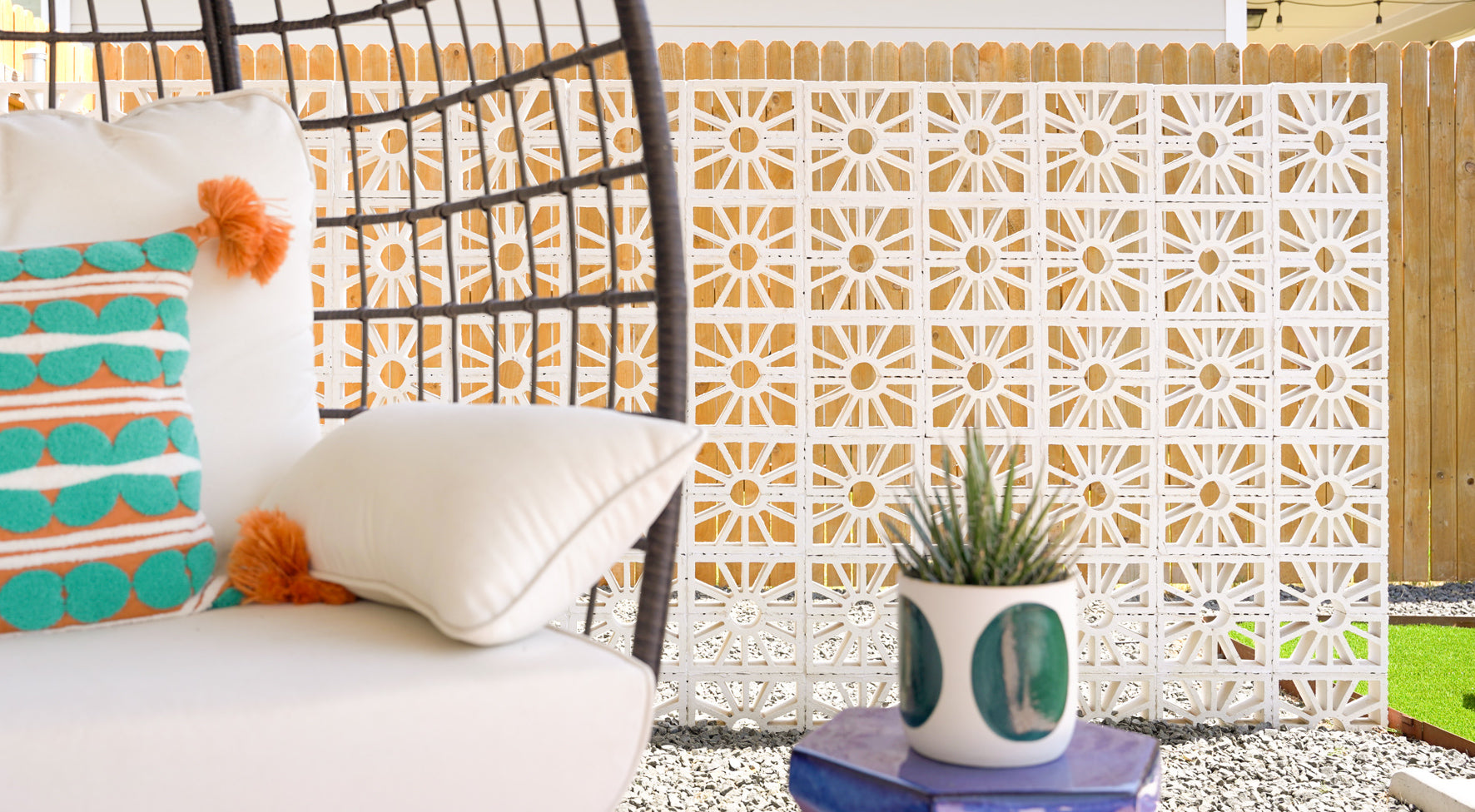Turning a Simple Stair Guard into a Striking Breeze Block Feature Wall
By Clay Imports
Breeze blocks are one of the most versatile building materials you can add to your next project. Outdoors, they’re strong enough to withstand rain and wind. Indoors, they bring a stylish balance of privacy, design, and functionality.
At our San Miguel de Allende Studio, we decided to take on a big challenge: building a fourteen-foot-tall breeze block wall. In this article, we’ll walk you through how we built it, share recommendations for working with breeze blocks, and hopefully inspire you to design your own.
- Preparing to Build a Breeze Block Wall
- Designing with Mixed Breeze Block Patterns
- Reinforcing the Structure
- Final Touches & Finishes
- Breeze Block Walls: A Functional & Stylish Design Choice
Preparing to Build a Breeze Block Wall
Good design solves problems while balancing form and function. For our stairwell wall at SMA Studio, we wanted to highlight the beauty of terracotta breeze blocks while also solving three key challenges:
-
Airflow – improving ventilation between upstairs and downstairs.
-
Privacy – creating separation between shared spaces and rooms above.
-
Safety – ensuring a protective wall alongside the staircase.
The result? A striking wall measuring thirteen feet wide by fourteen feet tall, quite the feat considering terracotta breeze blocks are only 2.5” thick.

Fourteen-foot-tall mixed-pattern terracotta breeze block wall at Clay Imports’ San Miguel de Allende Studio.
To achieve the look, we used a mix of Petalo and Ventana blocks. The combination creates visual interest by breaking up uniformity while maintaining a harmonious pattern.
Pro Tip: If you’re mixing different block styles, always make sure the blocks are the same thickness and size. Since handmade terracotta blocks naturally vary, order samples in advance to get familiar with their organic variations. These aren’t defects; they’re part of the charm of natural clay.
 When combining two different breeze block patterns, make sure they have the same width for a seamless installation.
When combining two different breeze block patterns, make sure they have the same width for a seamless installation.
Designing with Mixed Breeze Block Patterns
Before stacking, we laid out the blocks to visualize how the wall would look. Here are a few design rules we recommend:
-
Use fewer complex patterns: We used about ⅔ Ventana (minimalist) and ⅓ Petalo (intricate). This balance gives the eye a place to rest and highlights the more detailed design.
-
Pair half-pattern blocks: Keeping them in pairs creates continuity and a smoother flow in your wall.
Plan your layout in advance: You can sketch digitally, draw it on paper, or even lay out the blocks on the floor and photograph them. For inspiration, see how Ashley Campbell used printed layouts for her project.

A rendered preview of the layout combining Ventana and Petalo breeze blocks for a mixed-pattern wall design.
Reinforcing the Structure
While breeze block walls are primarily decorative, reinforcement is still important. Here’s what we did:
-
Reinforced mortar joints with rebar.
-
Built a cement footing and added angle iron support.
-
Finished with a cement cap for stability and durability.
We kept all of the reinforcement work hidden between the wall and the staircase, ensuring the visible side of the wall remains sleek and eye-catching.
Check out this video by our friend Allie to see how to reinforce joints and build a proper concrete footing.



Halfway through building the mixed-pattern breeze block wall, showing the combination of Ventana and Petalo designs taking shape.
Final Touches & Finishes
A few things to keep in mind when finishing your wall:
-
Not load-bearing: Breeze block walls should not support structural loads heavier than their own weight.
- Color options: We chose to keep the natural terracotta tone, but you can paint breeze blocks (see our [painting guide]) or explore our new glazed breeze blocks, which are pre-finished for durability.
- Maintenance: Extend the life of your wall with our Clay Care products, designed to preserve the natural beauty of clay and glazed surfaces.

Breeze Block Walls: A Functional & Stylish Design Choice
Whether you’re adding privacy indoors, creating airflow in a courtyard, or designing a statement feature wall, breeze blocks are a timeless solution. With the right prep, reinforcement, and thoughtful design, your mixed-pattern breeze block wall will be as durable as it is beautiful.

The finished breeze block wall pairs beautifully with contemporary wooden furniture, balancing warmth and texture in the space.
Have questions or need more information? Reach out to us anytime at contact@clayimports.com. We’re here to help bring your design to life.




 Share
Share
 Pin it
Pin it






